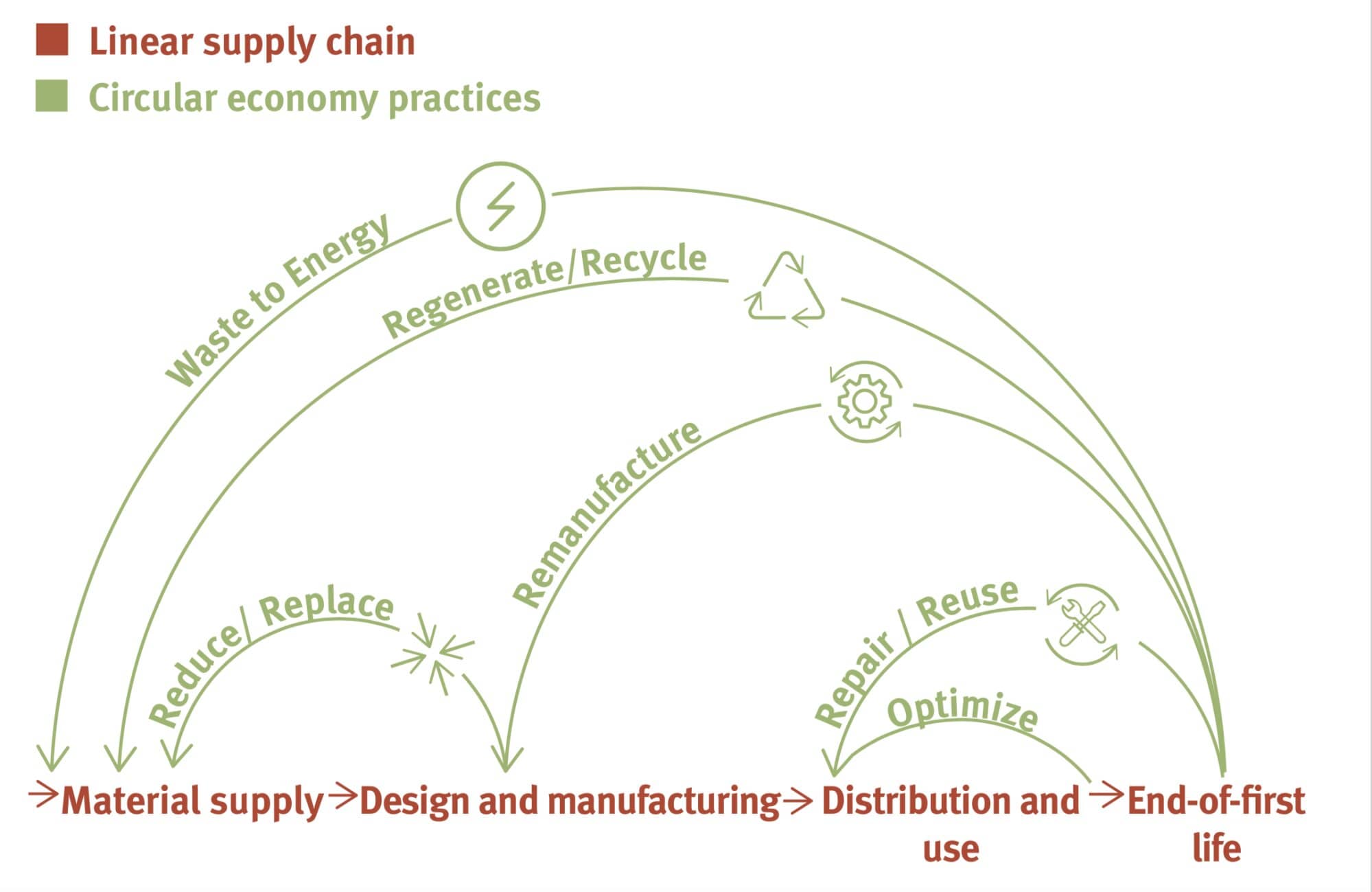Economy
India - Australia Circular Economy Hackathon
- 27 Oct 2020
- 7 min read
Why in News
Atal Innovation Mission (AIM- an initiative set up by NITI Aayog), in association with Australia’s Commonwealth Scientific and Industrial Research Organisation (CSIRO), will organise a two-day hackathon on circular economy, ‘India-Australia Circular Economy Hackathon (I-ACE)’, in December 2020.
- The idea of I-ACE was conceived during a virtual summit on 4th June, 2020, between the Indian and Australian prime ministers, exploring innovative ways to boost the circular economy in India and Australia.
Key Points
- Focus: I-ACE will focus on identification and development of innovative technology solutions by students, startups and MSMEs of both nations.
- Key Themes:
- Innovation in packaging, reducing packaging waste.
- Innovation in food supply chains, avoiding waste.
- Creating opportunities for plastic waste reduction.
- Recycling critical energy metals and e-waste.
- Selection of Winners: Shortlisted students and startups/MSMEs will be called for the hackathon, where two winners (one student and one startup/MSME) per theme from each country will be announced at an award ceremony.
- Cash Prize: Winning teams from both the countries will get cash prizes. The winning Indian student and startup/MSME will be awarded a prize of Rs. 2 lakh and Rs 5 lakh, respectively, coupled with post-hackathon product development opportunities.
Circular Economy
- Meaning: It is an economy where products are designed for durability, reuse and recyclability and thus almost everything gets reused, remanufactured, and recycled into a raw material or used as a source of energy.
- Efficient Use of Resources: It includes 3 R’s (Reduce, Reuse and Recycle), Refurbishment, Recover, and Repairing of materials.
- Example: If a person is planning to discard his/her mobile, it can be given to someone else (i.e. giving the mobile second life-Reuse), rather than throwing it just like that.
- Once the mobile reaches its end of life, it can be ensured that everything embedded in it, aluminum, copper, plastic etc. should be brought back to production cycle so that the circle of the economy gets completed.
- Response to the Linear Process: Many countries follow a linear process in which raw materials are taken from the environment, turned into new products which are then disposed of after use.
- Benefits:
- For Industry:
- Fulfills the need for raw materials: The output produced by industries in a circular economy comes back to the industries in the form of input, for example, when parts of a mobile will be segregated, copper and aluminum will become raw materials for some industries.
- Efficient utilization of resources: This helps industries in earning cash profits equivalent to 3-5% of their turnover. Ultimately, QCDF (Quality, Cost, Delivery, and Flexibility) and sustainability level of industries get improved.
- For Environment:
- Problem of disposal of waste gets solved as in a circular economy, waste is converted into raw materials.
- Also solves the problem of air pollution, water pollution, and land pollution.
- For Consumers:
- Cost-Effective: The products in the circular economy are more cost effective for consumers as they tend to be more efficient, besides having a longer shelf life.
- Efficient Products: Increased Efficiency leads to a reduction in the cost of maintenance as well as that of disposal, which otherwise a consumer has to incur in a huge amount.
- For Industry:
- Global Response: Germany and Japan have used it as a binding principle for reorganizing its economy, whereas China even has a law on it (Circular Economy Promotion Law).
- Further, the Sustainable Development Goals, adopted by the United Nations Member States in 2015, include many related ambitions.
Circular Economy and India
- India is already on its path to the circular economy. Initiatives of the National Productivity Council (NPC) and government show that.
- NPC is an autonomous organisation under the Ministry of Commerce & Industry. Productivity Week 2019 Theme was ‘Circular Economy for Productivity and Sustainability’.
- ‘Digital India’ Program contains a significant component of the recycling of electronic wastes. Swachh Bharat Mission is also about making wealth out of wastes.
- India has a huge potential for reuse and recycling as only around 20% of the total waste generated goes into the recycling process.
- Manufacturing Sector, especially MSMEs can help a lot in transformation towards a circular economy. The sector should ‘DECIDE’ i.e.
- Designing processes for refurbishment and easy cycling.
- Educating masses on Circular Economy and its benefits.
- Collaborative Models for smooth implementation of Circular Economy.
- Innovating Products for circularity.
- Digitization for transparency, virtualization, dematerialization, and feedback driven intelligence for saving resources.
- Energy-Efficient for environmental sustainability.
Way Forward
- India and Australia have had a strong and productive bilateral partnership since a decade and their collaborations across a broad range of areas have yielded significant results.
- Circular Economy can lead to the emergence of more sustainable production and consumption patterns, thus providing opportunities for developed and developing countries to achieve economic growth and inclusive and sustainable industrial development (ISID) in line with the 2030 Agenda for Sustainable Development.
- The transition towards a circular economy requires systematic innovations including new innovative financing models, partnerships, business models and close integration of industry 4.0 principles.





